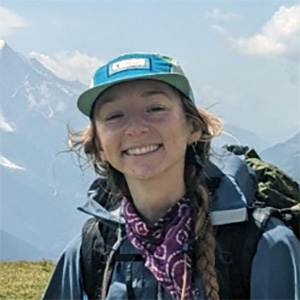
Danielle Parsons
Program: Master’s Program in Ecology
Date: Wednesday, May 12th, 2025
Time: 2:00 PM
Location: BioScience Center Gold Auditorium
Zoom: https://SDSU.zoom.us/j/889934883401
Committee Members
- Dr. David Lipson (Chair), Biology
- Dr. Nicholas Barber, Biology
- Dr. Janet Franklin, Geography
Abstract
Background and aims In Mediterranean shrublands, periodic wildfires and nitrogen (N) availability define the response traits of plants, which produces cascading effects on community productivity and soil fertility. In the endangered southern California coastal sage scrub (CSS) habitat, N is a key limiting nutrient that is easily lost after wildfire. The regrowth of the climax plant community hinges upon early successional fire followers with specialized N acquisition traits, such as N-fixers that are presumed to enhance soil fertility in many habitats. However, their effect remains understudied in CSS, as well there are other understudied N acquisition traits like underground storage structures called rhizomes that may also retain N after wildfire.
Therefore, this research investigates how a diversity of perennial fire followers collectively influence N retention, including Acmispon glaber, Eriodictyon crassifolium, Malacothamnus fasciculatus, and Salvia mellifera. Methods This study examined a three-year-old post-burn CSS preserve in San Marcos, California. We analyzed response traits by measuring N pools and 15N from leaves and seeds. We assessed effect traits by quantifing aboveground biomass, litter N and C:N, soil N pools, soil 15N, and soil N cycling rates.
Results Acmispon glaber fixed 100% of its N, however soil N was not enhanced. Instead, this obligate seeder resorbed most of the N before litterfall and allocated much to its N to N-rich seeds. Surprisingly, the rhizomatous Malacothamnus fasciculatus synthesized the most N rich leaves without the trait of fixation. As well, the rhizomatous species resorbed the most N before litterfall, which suggests they translocated N to their rhizomes that may lead to greater N retention post-fire.
Overall, all fire followers produced negative rates of net mineralization suggesting microbial immobilization that temporarily reduced plant-available N. Conclusions These results test assumptions about N fixers by uncovering alternative pathways for the fate of N after wildfire. Additionally, we highlight how coexisting species with complementary traits collectively reduce post-fire losses and facilitate the regrowth of the climax community. As anthropogenic land-use changes and climate instability leads to uncertain secondary succession, understanding the mechanisms that strengthen the resilience of imperiled habitats is essential.

